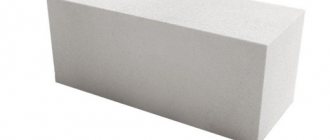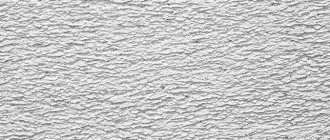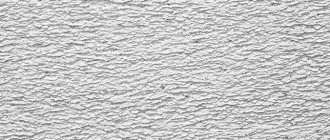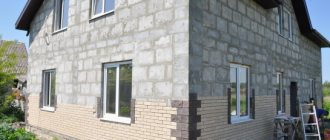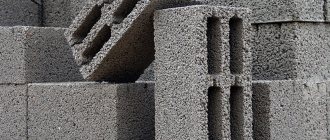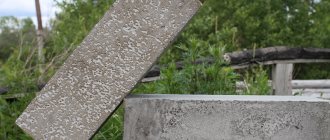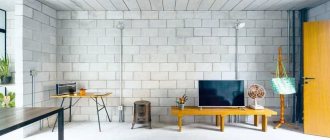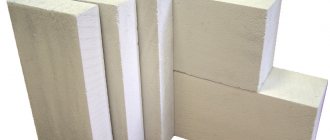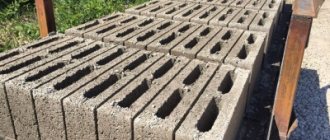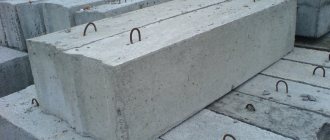The production plant "ZhBI 24/7" offers enterprises in the construction industry inexpensive and high-quality reinforced concrete products.
FBS concrete foundation blocks are produced according to the GOST 13579-2018 standard, introduced to replace GOST 13579 78. The document contains information about the types and design of blocks, their scope of application, and symbols. Data is provided on the location, grades and design of mounting loops, reference steel consumption and installation tolerances.
The document contains tolerances and maximum deviations of geometric parameters, technical requirements for concrete and reinforcing products, and surface quality.
Materials and dimensions of foundation blocks
Manufacturing materials:
- expanded clay concrete. The main components are Portland cement and expanded clay. Due to expanded clay, the material has a low density (up to 1.8 tons per cubic meter) and a relatively small weight - 260-1500 kilograms. Marked with the letter L (i.e. lungs). Pros: excellent thermal insulation properties, the most affordable price. When used, the savings are threefold: the material itself is cheaper, installation is simpler (equipment rental is cheaper), and the consumption of thermal insulation materials is less. The best option, but only for light structures in relatively dry areas: the water resistance of expanded clay materials is low and the load-bearing capacity of finished blocks is also low;
- reinforced concrete (filler – gravel). Grades M100, 150, 200. For a one-story light structure, 100 is enough. The weight of a reinforced concrete foundation block is the largest, from 300 to 2000 kilograms depending on the dimensions, density is not less than 2 tons per cubic meter. They are marked with the letter T. Unlike expanded clay concrete, reinforced concrete is suitable for heavy buildings made of brick and stone, incl. for multi-storey construction.
- silicate high-strength concrete. Medium weight material (marked C). The binder is lime. Average density 1.8 tons per cubic meter, weight 300-1630 kilograms. The strength of these blocks is greater than that of expanded clay concrete, but their water resistance is even lower, so they are usually not used for foundations.
The choice of the type of concrete blocks for the foundation depends not only on the climate, but also on the chemical composition of the soil. For example, on deoxidized soils near Moscow, a material containing crushed stone is preferable; it has higher resistance to acids. The chemical composition of the soil is determined using a special test (can be purchased at a farm store).
To increase frost resistance, special additives are added to the initial composition of all blocks.
LABELING, STORAGE AND TRANSPORTATION
5.1. Marking of blocks is in accordance with GOST 13015.2.
Markings and signs should be applied to the side surface of the block.
(Changed edition, Amendment No. 1).
5.2. Blocks should be stored in stacks, sorted by brand and batch and stacked close to each other.
The height of the stack of blocks should be no more than 2.5 m.
5.3. During storage and transportation, each block must be placed on wooden spacers located vertically, one above the other, between the rows of blocks.
The pads under the bottom row of blocks should be laid on a dense, carefully leveled base.
5.4. The thickness of the gaskets must be at least 30 mm.
5.5. The blocks must be transported with reliable fastening that protects them from displacement.
The height of the stack during transportation is set depending on the carrying capacity of vehicles and the permissible loading dimensions.
5.6. Loading, transportation, unloading and storage of blocks must be carried out in compliance with measures to prevent the possibility of damage.
5.7. Requirements for the document on the quality of blocks supplied to the consumer are in accordance with GOST 13015.3.
Additionally, the document on the quality of the blocks must indicate the grades of concrete for frost resistance and water resistance, as well as the water absorption of concrete (if these indicators are specified in the order for the production of blocks).
(Changed edition, Amendment No. 1).
Types of blocks according to GOST: FBS, FBP, FBV, FL and BF
For the construction of technical underground premises, the construction of basement walls, devices, as well as the construction of walls of low (often unheated) buildings, and other structures operated at temperatures ranging from +50 to -70 degrees, three types of concrete blocks are traditionally used (according to GOST 13579- 78): FBS, FBP and FBV. They are made from heavy or silicate, as well as expanded clay concrete. The density of such products should be 1800 kg/m3 and higher.
FBS is a solid foundation block with maximum strength. Small products are not reinforced, they are only equipped with metal mounting loops. Dimensional blocks are reinforced with longitudinal steel rods, which significantly increases the weight and strength of building elements.
FBV blocks assume the presence of a longitudinal dimension in the product cavity itself. This cut is needed to install various utilities. Such products are produced using the same technology as FBS, but from. Such blocks are rarely used in construction; they are usually ordered at the factory. Standard dimensions: length 88 centimeters, height 58 and width 40/50/60 centimeters.
FBP are hollow lightweight blocks with open square-shaped holes located at the bottom of the element. Blocks are produced from concrete grades no lower than M150, their standard length is 238 centimeters. Linear dimensions can be very different, which determines the cost of the product. FBP is used in the construction of foundations for industrial equipment and for arranging walls inside the basement.
There are also blocks marked FL, which have a trapezoidal shape and are usually used as a base for a strip/column type foundation. The dimensions and parameters of such unique “pillows” are regulated by GOST 13580-85. The height of the elements can be 30/50 centimeters, width - from 60 to 320 centimeters, length - 78-298 centimeters.
The smallest blocks have dimensions of 118 by 60 by 30 centimeters, the largest ones have dimensions of 298 by 200 by 50 centimeters.
BF blocks are used for the construction of external/internal walls of buildings of industrial and agricultural enterprises. Reinforced concrete strip blocks are produced from heavy concrete, in accordance with GOST 28737-90. There are only 6 types of block cross-sectional sizes.
Small-sized FBS
According to the standards of various industries, blocks with a length of 40 and 60 cm are used to create structures of small dimensions. Many manufacturers sell blocks made of heavy concrete, which differ in size 40x20x20 cm. They are mainly used for wooden houses and buildings made of foam blocks. Such foundation elements are characterized by low weight and high strength.
Some products can be called non-standard. Due to some of their characteristics, they are becoming increasingly popular. These products are quite versatile:
- they are used to create walls of basements and cellars;
- non-standard models are used in the construction of columnar foundations for cottages and dachas;
- if combined with molded strip structures, they can be used as a main element.
Such products are made from heavy concrete. This ensures excellent strength of the foundation elements.
Manufacturing technology
FBS are manufactured in the shape of a parallelepiped. For production can be used:
- heavy concrete;
- expanded clay concrete;
- medium density silicate concrete.
Concrete blocks are not reinforced. Various technologies are used to produce concrete blocks for the foundation, the most common are:
- natural drying (100% strength is achieved on day 28);
- steaming (forced drying to obtain 100% strength in a short time. A block located in the steaming chamber for a day acquires strength from 70% and above).
The most important ingredient in a block is high-quality concrete. The end part of the FBS has grooves that are filled with mortar during installation work.
Figure 2 - Form for filling
The block manufacturing process is as follows:
- Prepare a concrete mixture using cement, aggregate and water (the solution is mixed using the blades of a forced-type mortar mixer).
- Load the solution into the block mold (manually or using a pneumatic concrete pump).
- Compact the solution (a deep vibrator is used to compact the solution). The concrete compaction process takes a few minutes.
- Remove the finished blocks after 24 hours (removal occurs earlier if hardening accelerators are used).
To prevent the block from drying out, cover it with plastic wrap and occasionally water it with water. This is necessary for the block to gain strength.
Weight of products
GOST, which regulates the characteristics of FBS blocks, standardizes not only the dimensions and strength of products. Special documentation provides for recording the mass of products. It is needed for quality control. This is explained by the fact that under construction conditions it is not possible to assess the density of the material.
The mass of blocks is also needed for the optimal selection of loading equipment. In addition, the choice of means transporting building materials depends on this indicator. FBS is usually transported using 10 or 20 ton tanks.
The strength and durability of the foundation depends on many parameters, including the correct calculation of the number and dimensions of individual elements of prefabricated structures. One of the most popular options for constructing a foundation is to create a foundation from concrete products.
For such structures there is no need to construct formwork, and the high strength of the products is guaranteed by the technological features of their manufacture. Concrete is steamed and vibrated during the creation process.
During the construction of foundations on soft soils, foundation blocks are installed on special pads. Such products are slabs in the form of a prism, which can significantly reduce the load on the soil.
In addition to constructing foundations for houses, such products are used in the construction of overpasses, ramps and fences. GOST, which regulates the conditions for manufacturing blocks, was adopted back in 1978.
FBV
Such products are produced only to order. For this reason, they can be seen quite rarely on construction sites. The main feature that distinguishes them from FBS is the longitudinal cutout, which is used for utility lines. Such designs are quite short - 88 cm. They can have a width from 40 to 60 cm in increments of 10 cm. The height of the products is 58 cm.
In the production of FBV, like FBS, concrete grades higher than 100 kg/sq.m. are used. cm. The material must have frost resistance of 50 cycles. For reinforcement, steel of several classes is used.
How to lay FBS
In any row, laying begins from the corners. Then the blocks are placed in the places where the piers are drained. They are called lighthouses, and then all others are compared to them. Their vertical alignment is checked and corrections are made if necessary. Most often, the block must be lifted again, moved and replaced.
After the beacon elements are installed, the moorings are stretched - cords along which they are guided when installing the next blocks. They mark the boundaries of the wall, and so that the FBS stand symmetrically relative to the middle of the FL block (pillow block). The maximum permissible deviation is 12 mm. All subsequent rows of blocks should also be placed exactly above the middle.
When laying blocks, you must ensure that they are stacked one above the other without much displacement
It is more convenient to pull the cords 2-3 mm from the side surfaces of the lighthouse blocks. This will make it easier to display. Intermediate blocks are placed starting from the largest: first they put everything 2.4 meters long, then 1.2 and then 0.9. The correctness of their installation is checked against the marking cords, verticality - with a plumb line.
Estimated cost
Foundation structures are quite often used for the construction of civil buildings. The smallest of them (FBS-6.3.6) costs 500 rubles per 1 element. These elements are optional.
The same products, having a length of 1.2 m, are sold on the construction market at a price of 1000 rubles. Full-size products with a thickness of 30 cm and a length of 2.4 m are sold for 2,100 rubles.
The most popular among consumers are FBS blocks, which have a width of 60 cm. This is the thickness of the foundation that is chosen for the construction of residential buildings.
Products with voids are sold less actively. Such structures are usually priced 15% higher than solid structures. This can be explained by the greater labor intensity of pouring such products.
Blocks with cutouts are not presented in factory catalogs. To receive such a product, you will have to place an individual order.
Quite often there are advertisements for the sale of used blocks. However, you should not rely on their low cost. It is better to consult an experienced specialist. The master will be able to competently assess the condition of such blocks and give advice regarding their acquisition.
Product characteristics
Foundation blocks are selected according to the purpose of the material.
In addition to the fact that foundation blocks are selected according to density and weight, there are many properties that influence the determination of the purpose of the material:
- Standard size. Blocks for the foundation must be determined by shape, purpose and marking:
- In the shape of a cylinder with the letter “F” - products used for pile and columnar type foundations.
- Reinforced concrete products in the shape of a trapezoid are used as a support for a strip, columnar base, they are marked “FL”, the parameters are regulated by GOST 13580-85.
- Elements in the shape of a rectangle, equipped with ears at the ends - these are FBS blocks, they are shown in the photo, they are used for constructing strip foundations, constructing basement floors, and erecting walls. Dimensional gradations are specified in GOST 13579-78.
- Hollow products intended for creating permanent formwork are designated “FBP”. Indicated for the construction of high-rise buildings; in small-format private house-building, the use of the material is unprofitable - the huge margin of safety will not be fully used. GOST 13579-78.
- Beams in the shape of a rectangle, trapezoids are marked “BF” and are standardized by GOST 28737-90.
Decoding the symbols is quite simple
Decoding the designations is quite simple: the designations of numbers are the dimensions of the elements (dm): the first is the length size, the second is the width, the third is the height. The dimensions and weight of the product require the use of a crane and winch, but manufacturers offer small-format foundation blocks 20*20*40 cm, which, as a rule, are produced by the same plant that produces large-format products. Production includes vibrocompression processes, using a solution of Portland cement, clean sand and coarse aggregate, thereby achieving the required density of the solution.
Small-format foundation blocks are differentiated into solid and hollow:
- Solid elements are indicated for arranging foundations for low-rise (1-3 floors) buildings on solid soils.
- Hollow elements are ideal for the construction of wall panels.
- Frost resistance. The standard is determined only by certificates that are issued for products and is calculated in the number of cycles of complete freezing/thawing of products.
- Resistance to aggressive environments is another parameter that needs to be taken into account. In this case, it is better to choose the type of concrete using a preliminary soil test. Testers are sold in building materials stores and cost about $2. After testing, the developer will be able to select a wall or foundation material with crushed stone filler - they are much stronger than expanded clay and more resistant to the alkaline effects of acidic soils.
What kind of concrete is used
A strip foundation is a building structure that works primarily in compression (with the exception of foundation pads). There is no need to use high grades and classes of concrete. According to GOST 13579-78:
- maximum compressive strength class B15 (or grade M200);
- minimum class for products made of expanded clay concrete or heavy concrete B3.5 (or grade M50);
- minimum class for elements made of silicate concrete B12.5 (grade M150).
Most often, heavy cement concrete B7.5 is used for foundations for blocks in the FBS and FBV series. For weakened FBP, the more durable material B12.5 is used.
Prefabricated strip foundation.
Manufacturing technology
If we consider the technology for creating FBS, today there are several options for their production.
If we consider the technology for creating FBS, then today there are several options for their production. The choice of approach depends on the concrete filler. So, on the market you can find the following methods:
- Expanded clay concrete or silicate models. Density is 1800 kg per cubic meter. m, and determines the dimensions of the weight of the blocks.
- Foundation blocks made of high quality concrete;
- Cement block M 100 is one of the cheapest categories.
According to GOST, 78 casting of FBS should take place in special forms or by the method of immediate stripping. The second method is characterized by a trapezoidal cross-section. It is worth considering that in addition to cement, the blocks contain plasticizers and additives.
Features of calculation and installation
As you already said, calculating the number of blocks is quite simple. To do this, you need to determine the volume of the future foundation and divide it by the volume of one block of your choice. As a result, you will receive the required number of designs to order.
There is no need to worry about the number of storeys in the building. The strength of the factory block is quite sufficient to build a five-story house on it.
The condition of the soil is much more critical for such a structure. Here you need to take into account one feature of block foundations - low solidity. Unlike a solid strip foundation, a block foundation has vertical and horizontal seams that weaken it. Therefore, before installing the FBS blocks, a monolithic reinforced concrete belt is poured along the bottom of the trench. It takes on a significant portion of the heaving forces that occur in freezing wet soil.
If the building’s foundation is high (there is a basement), then experts recommend making an armored belt every two rows of blocks.
The ideal foundation for a block foundation is soil composed of coarse sand with a deep aquifer. Since such conditions are very rare, in all other cases the block grillage needs to be strengthened. In addition to using an armored belt, each row of blocks should not be laid dry, but on concrete mortar M 150 with a thickness of at least 3 cm.
Preparing the base
For the base for the blocks, it is enough to make a sand bedding. It plays the role of a leveling layer and its thickness usually does not exceed 15 cm. If construction is carried out on dry sandstones, then the blocks can be placed directly on the ground.
For buildings erected on problematic soils, reinforced concrete foundation pads (FL) are placed under the blocks to increase the supporting area.
Installation of a concrete block foundation
The standards prohibit installing a foundation from FBS blocks if the bottom of the trench is covered with snow or flooded with water. These structures are moved by a crane.
First, blocks are installed at the corners of the foundation and at the junction points of the internal walls. They act as installation beacons. Having checked with a level that the upper planes of all lighthouse blocks coincide, a cord is pulled between them and intermediate structures are placed along it. At points determined by the project, gaps are left between the blocks to allow utility networks to pass through.
Before installation, the blocks are cleaned of dirt and moistened with water. Installation is carried out on concrete mortar with ligation of vertical seams (due to the displacement of rows and the use of additional blocks). Vertical seams are also filled with mortar, compacting it with a bayonet shovel.
Helpful advice: when purchasing foundation blocks, be sure to check with the seller for a certificate of conformity and ask for a copy for yourself. This document guarantees that the quality of products meets the requirements of the current GOST. It may be needed to substantiate claims and compensate for losses.
Video on the topic:
Laying the foundation
According to certain standards, installation of a foundation made of FBS blocks is prohibited if there is a layer of snow or water at the bottom of the trench. Blocks should only be moved using underground equipment.
First, you should install blocks at the corners of the future foundation. They are mounted in places where internal walls adjoin the base. After checking their level, you should pull a cord between these elements and install intermediate elements along it.
All elements must be thoroughly cleaned before installation. The concrete for the joints is compacted with a shovel.
Manufacturers and prices
Concrete products such as FBS and other blocks are produced by many concrete plants, so finding them in Moscow and the regions is not difficult. The production volume may vary, but all serious manufacturers guarantee high quality and adherence to technology in strict accordance with current GOSTs.
One of the largest manufacturers of FBS in Russia is the Industrial Construction Parts Plant. All products are manufactured in accordance with GOST standards, they are durable and of high quality; the average price of foundation blocks starts from 1,200 rubles per piece.
specializes in the creation of various concrete elements. The product range includes more than four hundred items, including various types of foundation blocks. The cost varies, depending on the size and type, on average it starts from 1650 rubles.
The products are of high quality. The plant creates various types of concrete blocks, the cost of which depends on the position, but is at a slightly lower level in comparison with other manufacturers.
The Alexandria expanded clay plant produces various types of concrete products. Small concrete blocks used in the creation of load-bearing walls, columns, fences, and also used as supporting elements of semi-basements, basements, and basement floors are in fairly high demand. All blocks are produced in special molds, which guarantees dimensional accuracy. The cost varies, depending on the type and size of the element.
The Zlatoust plant supplies good products to the construction market - the product range includes FBS, FVP, FBP, panels, stairs, road slabs and lintels. All are sold at an affordable price, the cost of a foundation block starts from 950 rubles per piece.
Pros of foundation elements
There are several main advantages of foundation products that explain the popularity of their use:
- Reducing time spent on foundation installation. During the construction of the base using blocks, there is no need to pour concrete solution into the formwork, or wait for the material to gain strength.
- Standard dimensions. Due to the fact that foundation blocks are made of certain sizes, it is possible to calculate how many elements will be needed to build the foundation.
- There is no need to purchase expensive consumables.
- The material can be selected according to the technical data.
- Long service life. If the blocks are installed correctly and the operating conditions of the products are observed, such structures will last at least 100 years.
Such advantages ensure the reliability and durability of foundation blocks.
How is acceptance carried out and quality checked?
After manufacturing, foundation blocks are accepted by technical control service employees in batches of up to 200 pieces. During acceptance tests, dimensions, strength characteristics, and welded joints are controlled.
All blocks of this class are made of heavy grades of concrete; they must meet the requirements of GOST for bases and foundations
Both laboratory and visual control methods are used. The surface category, crack width and accuracy are selectively checked. Visually check the correctness of the designation, the presence of embedded elements, and safety lugs.
To control products, laboratory equipment, ultrasonic testing and other methods are used to check:
- Moisture absorption coefficient.
- Resistance to negative temperatures.
- Strength characteristics.
- Dimensional tolerances.
- Strength of welded joints.
- Waterproof.
- Marketable condition.
- Presence of a protective layer.
- Condition of the reinforcement frame and embedded parts.
CONTROL AND TEST METHODS
4.1. The compressive strength of concrete should be determined according to GOST 10180 on a series of samples made from a concrete mixture of the working composition and stored under the conditions established by GOST 18105.
When testing blocks using non-destructive methods, the actual tempering compressive strength of concrete should be determined by the ultrasonic method in accordance with GOST 17624 or mechanical devices in accordance with GOST 22690, as well as other methods provided for in the standards for concrete testing methods.
(Changed edition, Amendment No. 1).
4.2. (Deleted, Amendment No. 1).
4.3. The grade of concrete for frost resistance must be controlled in accordance with GOST 10060.
4.4. The water resistance of concrete blocks should be determined according to GOST 12730.0 and GOST 12730.5 on a series of samples made from a concrete mixture of the working composition.
(Changed edition, Amendment No. 1).
4.4.1. (Deleted, Amendment No. 1).
4.5. Water absorption of concrete blocks intended for use in conditions of exposure to an aggressive environment should be determined in accordance with the requirements of GOST 12730.0 and GOST 12730.3 on a series of samples made from a concrete mixture of the working composition.
4.6. (Deleted, Amendment No. 1).
4.7. The moisture content of expanded clay concrete should be determined according to GOST 12730.0 and GOST 12730.2 by testing samples taken from finished blocks.
At least two samples should be taken from each block.
It is allowed to determine the moisture content of concrete blocks using the dielcometric method according to GOST 21718.
(Changed edition, Amendment No. 1).
4.8. The dimensions and deviation from straightness of the blocks, the position of the mounting loops, as well as the quality of the surfaces and the appearance of the blocks are checked according to GOST 13015.0.
Characteristics and features of FBS foundation blocks
FBS is produced from 1800 to 2400 kg/m3. The specification assumes the following three mixture options: with a strength above B7.5 (grade M100), at least B12.5 (grade M15), heavy concrete with strength from B3.5 (grade M50) to B15 (grade M200).
The resistance to low temperatures demonstrated by FBS must be at least F50 (which means that the foundation block can withstand a minimum of 50 freeze/thaw cycles). The optimal level of moisture resistance is W2, the thermal conductivity of the block is quite high, but this is not a problem for the foundation.
When indicating the size of the FBS, indicate its size in decimeters, rounding up. In addition to the dimensions, they also indicate the type of concrete from which the FBS is made: heavy (T), silicate (S), expanded clay (P, with a porous base).
An example of decoding the markings of the FBS-24-4-6 T block: the size of the foundation block is 240 centimeters in length, 40 and 60 centimeters on the sides, it is made of heavy concrete. Marking can be done in different ways (with periods, hyphens, spaces), but always requires the indication of basic quantities.
The weight of the FBS starts from 260 kilograms, so the construction of the foundation is carried out exclusively with the use of special equipment; the work cannot be completed with your own hands.
In the construction of residential buildings, foundation blocks of short length are usually used; multi-storey and industrial buildings - the largest ones. In the production of blocks, a certain error in dimensions is allowed.
Permissible dimensional errors in the standard:
- Height/width – deviation up to 8 millimeters.
- Length – no more than 13 millimeters.
- Along the cutout - up to 5 millimeters.
When purchasing and selecting blocks, it is important to pay attention to the size and weight of the FBS. So, if the weight is below the specified value, and the dimensions are normal, this indicates the presence of void areas in the blocks, poor compaction of the material, which negatively affects its strength. It is better not to use such blocks in the construction of a foundation.
It is better not to use such blocks in the construction of a foundation.
To facilitate the installation process, the blocks are produced with special metal eyes, which are placed on top. They are made from periodic metal profiles or steel. If necessary, you can order small blocks without hinges. According to GOST, there should be no cracks or deformations on the blocks. In addition to the main types, FBP, FBV and others are also produced for the construction of residential and public buildings.
Features of FBS
When manufacturing such products, the requirements of GOST 13579-78 are met. If they are not followed, the structure may be destroyed in the future. FBS have a parallelepidal shape. They are made of heavy concrete. It must withstand a load of at least 1800 kg per 1 cubic meter. Such material is made without voids. The concrete used for the blocks must have a strength greater than B 7.5.
The quality of manufacturing of FBS affects the characteristics of future masonry. For example, if the geometry of the products is inaccurate, the thickness of the joints will have to be increased, which will negatively affect the waterproofing of the masonry. According to the standards, the permissible distance between the surfaces of the blocks should be within 2-5 mm. If the surface of the product is dense and smooth, it will not crack under load and will not collapse when used in a humid environment. To obtain high-quality blocks, concrete blanks are processed on vibrating tables.
There are several types of foundation blocks. Their main difference is in size. According to GOST, such products are made in lengths from 880 to 2380 mm. The width of such blocks is usually 280 or 580 mm. The first option is not popular. This is due to the fact that such products have a low load-bearing load.
Block sizes are indicated in decimeters. They are rounded up. For example, if a block is designated 24.4.6, then its dimensions are 2380x400x580 mm. Products are also labeled according to their properties. Solid products are designated by the letter “C”. This product is the largest in the available range. The largest mass of a concrete product of this kind is 1.96 tons.
In addition, it is important to consider that even the smallest blocks have a mass of 260 kg. This requires the use of special equipment to work with such blocks.
From some manufacturers you can find lighter concrete labeled “T” (heavy). They are made from expanded clay concrete.
value 20Ñ20Ñ40
RESULTS CONTENTS ¸ÐºÐ°. 190Ñ190Ñ390 мм Ð»Ð¸Ñ ÐµÐ½Ñ Ñого недоÑÑаÑка. RESEARCH 30 RUR, RESULT RESEARCH ASSURANCE ASSURANCE · й Ð ¿Ð¾ Ñене Ð¾Ñ 35 до 75 ÑÑб. RESULTS. 20Ñ20Ñ40 20Ñ20Ñ40 62.5 кÑбомеÑÑе RESULTS менÑÑе, Ñем его ÑÑÑÑойÑÑво заливнÑм Ñп¿¾Ñобм м.
Marking of foundation blocks
The marking starts with several letters. Depending on the design application, the elements of the zero cycle are divided into:
- F - reinforced concrete and concrete made of heavy concrete for columns (the so-called glass type);
- FL - reinforced concrete made of heavy concrete for the construction of strip foundations;
- FBS - solid non-reinforced concrete for the construction of basement walls, technical undergrounds and foundations;
- BF - reinforced concrete strips made of heavy concrete for the construction of external and internal walls of buildings of industrial and agricultural enterprises;
- FR - reinforced concrete made of heavy concrete for three-hinged frames;
- FBP - concrete hollow foundation.
The following numbers mean the dimensions of the foundation block in decimeters, rounded to a whole number: length, width and height in decimeters or width and length (for FL). The first number indicates the length, the second number the width, and the third the height of the foundation block.
Table 1. Dimensions of FL foundation blocks
| Brand | Dimensions, mm | Weight, t | Concrete consumption, m3 | ||
| L | B | H | |||
| FL6-24… | 2400 | 600 | 300 | 0,93 | 0,37 |
| FL6-12… | 1200 | 600 | 300 | 0,45 | 0,18 |
| FL8-24… | 2380 | 800 | 300 | 1,15 | 0,46 |
| FL8-12… | 1180 | 800 | 300 | 0,55 | 0,22 |
| FL10-30-… | 2980 | 1000 | 300 | 1,75 | 0,69 |
| FL10-24-… | 2380 | 1000 | 300 | 1,38 | 0,55 |
| FL10-12-… | 1180 | 1000 | 300 | 0,65 | 0,26 |
| FL10-8-… | 780 | 1000 | 300 | 0,42 | 0,17 |
| FL12-30-… | 2980 | 1200 | 300 | 2,05 | 0,82 |
| FL12-24-… | 2380 | 1200 | 300 | 1,63 | 0,65 |
| FL12-12-… | 1180 | 1200 | 300 | 0,78 | 0,31 |
| FL12-8-… | 780 | 1200 | 300 | 0,50 | 0,20 |
| FL14-30-… | 2980 | 1400 | 300 | 2,40 | 0,96 |
| FL14-24-… | 2380 | 1400 | 300 | 1,90 | 0,76 |
| FL14-12-… | 1180 | 1400 | 300 | 0,0,91 | 0,36 |
| FL14-8-… | 780 | 1400 | 300 | 0,58 | 0,23 |
| FL16-30-… | 2980 | 1600 | 300 | 2,71 | 1,09 |
| FL16-24-… | 2380 | 1600 | 300 | 2,15 | 0,86 |
| FL16-12-… | 1180 | 1600 | 300 | 1,03 | 0,41 |
| FL16-8-… | 780 | 1600 | 300 | 0,65 | 0,26 |
| FL20-30-… | 2980 | 2000 | 500 | 5,1 | 2,04 |
| FL20-24-… | 2380 | 2000 | 500 | 4,05 | 1,62 |
| FL20-12-… | 1180 | 2000 | 500 | 1,95 | 0,78 |
| FL20-8-… | 800 | 2000 | 500 | 1,25 | 0,50 |
| FL24-30-… | 2380 | 2400 | 500 | 5,98 | 2,39 |
| FL24.24-… | 2380 | 2400 | 500 | 4,75 | 1,90 |
| FL24.12-… | 1180 | 2400 | 500 | 2,30 | 0,91 |
| FL24.8-… | 780 | 2400 | 500 | 1,45 | 0,58 |
| FL28.24-… | 2380 | 2800 | 500 | 5,90 | 2,36 |
| FL28.12-… | 1180 | 2800 | 500 | 2,82 | 1,13 |
| FL828-8… | 780 | 2800 | 500 | 1,80 | 0,72 |
| FL32.12-… | 1180 | 3200 | 500 | 3,23 | 1,29 |
| FL32.8-… | 780 | 3200 | 500 | 2,05 | 0,82 |
The grade of the slab is assigned by the project according to the value of the calculated pressure on the base under the base of the foundation, which is determined by dividing the calculated vertical uniform linear load (with a load safety factor of 1.0) by the width of the slab. The reinforcement and grade of concrete of the slab are also determined by the project.
Table 2. Dimensions of FBS foundation blocks
| Brand | Dimensions, mm | Weight, t | Concrete class | Consumption of materials | |||
| L | B | H | Concrete, m3 | Steel, kg | |||
| FBS24.3.6 | 2380 | 300 | 580 | 0,97 | B7.5 | 0,406 | 1,46 |
| FBS24.4.6 | 2380 | 400 | 480 | 1,30 | B7.5 | 0,543 | 1,46 |
| FBS24.5.6 | 2380 | 500 | 580 | 1,63 | B7.5 | 0,679 | 2,36 |
| FBS24.6.6 | 2380 | 600 | 580 | 1,96 | B7.5 | 0,815 | 2,36 |
| FBS12.2.6 | 1180 | 200 | 580 | 0,32 | B7.5 | 0,133 | 0,76 |
| FBS12.3.6 | 1180 | 300 | 580 | 0,485 | B7.5 | 0,203 | 0,76 |
| FBS12.4.6 | 1180 | 400 | 580 | 0,64 | B7.5 | 0,265 | 1,46 |
| FBS12.5.6 | 1180 | 500 | 580 | 0,79 | B7.5 | 0,331 | 1,46 |
| FBS12.6.6 | 1180 | 600 | 580 | 0,96 | B7.5 | 0,398 | 1,46 |
| FBS12.2.3 | 1180 | 200 | 280 | 0,16 | B7.5 | 0,066 | 0,38 |
| FBS12.3.3 | 1180 | 300 | 280 | 0,24 | B7.5 | 0,100 | 0,38 |
| FBS12.4.3 | 1180 | 400 | 280 | 0,31 | B7.5 | 0,127 | 0,74 |
| FBS12.5.3 | 1180 | 500 | 280 | 0,38 | B7.5 | 0,159 | 0,74 |
| FBS12.6.3 | 1180 | 600 | 280 | 0,46 | B7.5 | 0,191 | 0,74 |
| FBS9.2.6 | 880 | 200 | 580 | 0,235 | 0,36 | ||
| FBS9.3.6 | 880 | 300 | 580 | 0,35 | B7.5 | 0,146 | 0,76 |
| FBS9.4.6 | 880 | 400 | 580 | 0,47 | B7.5 | 0,195 | 0,76 |
| FBS9.5.6 | 880 | 500 | 580 | 0,59 | B7.5 | 0,244 | 0,76 |
| FBS9.6.6 | 880 | 600 | 580 | 0,700 | B7.5 | 0,293 | 1,46 |
What to choose
Let's consider which foundation is cheaper, strip or block, if we compare their arrangement under the same conditions from the point of view of the geology and hydrology of the site, and the characteristics of the planned building.
1. Scope of earthworks. The costs of excavating pits are almost the same - a little more soil will have to be removed for a monolithic foundation, since space will be required to attach the formwork.
2. Cost of materials. The cost of FBS and ready-mixed concrete, based on the price per cubic meter, is approximately the same. But in addition to ready-mixed concrete, formwork and reinforcement will be required.
3. Installation work. The foundation blocks are laid on cement mortar using a truck crane. Arrangement of a monolithic tape requires:
- installation of formwork panels;
- installation of reinforcement cage (using wire or welding);
- delivery of concrete mixture using an automatic mixer;
- laying concrete in formwork with compaction using a vibrator;
- proper care of the structure (concrete must be covered with film and regularly moistened during the period of strength gain up to 70%, this will take 3-7 days depending on the weather).
4. Access roads. Set up in both cases, because Requires the use of special equipment and freight transport.
5. Waterproofing. The costs are the same, since a reinforced concrete structure needs protection from groundwater, regardless of its installation technology.
6. Substrate for the foundation. Under both types of foundations, a gravel-sand cushion is laid at the bottom of the pit, on which a reinforced concrete strip with a waterproofing layer is mounted. A monolithic foundation requires a tape with widening, but this does not significantly affect the overall financial costs.
So, the main differences in financial investments relate to the costs of installation work. A truck crane with a long boom, capable of delivering blocks to any part of the pit from one parking lot, plus a team of three people who will complete the entire range of work on installing a prefabricated structure in 3-4 days. At the same time, renting a crane and paying workers will cost at least two times less than paying for the entire complex of work associated with the arrangement of a monolithic foundation.
To further reduce the cost of a block foundation, it is assembled from used FBS - if the block does not have serious damage, it is as strong as a new one, and its cost is noticeably lower. In addition, installation work is allowed during the cold season, when construction organizations offer discounts on the rental of special equipment.
You can reduce the cost of a monolithic foundation only by doing the work yourself, abandoning the vibrator in favor of manual processing of concrete using a reinforcing rod, using a mini-concrete mixer, etc. But this reduces the final quality of the foundation and prolongs its installation time.
In general, FBS construction is a good alternative to a strip base. But laying an underground foundation from blocks is used primarily when arranging buried structures, since they are less subject to loads from the soil.
How to choose the correct sizes of FBS blocks for construction
It is the calculated load of the object on the foundation that determines what size blocks need to be selected
The size of the product determines the strength of the structure, the technological process of installing the elements, the time it takes to complete the “zero cycle” and the cost of the product. The dimensions of building blocks are determined based on the type of soil and its bearing capacity. It is also necessary to take into account the thickness of the walls and ceilings, the weight of the structure, the area and strength of the foundation.
The lower the soil stability, the larger the foundation blocks should be. For example, for clay surfaces you should choose the largest elements, and on coarse soils you can build foundations from small-sized products. To create the most dense styling, it is recommended to use products of different sizes.
FBS foundation blocks have their own marking, which is a specific set of letters and numbers
According to GOST, the FBS block is presented in 15 standard sizes, where an important dimensional characteristic is the width of the products, which is 300-600 mm. According to the length of FBS, the assortment is divided into three standard sizes with values of 880, 1180 and 2380 mm
The height of the products is 580 mm. Only a block with a length of 1180 mm has a product height of 280 mm. The smallest element has dimensions of 880x300x580, and the largest foundation block FBS 24.6.6 has dimensions of 2380x600x580 mm.
| Designation | Width, mm | Height, mm | Length, mm | Element weight, kg |
| FBS.24.6.6 | 600 | 580 | 2380 | 1960 |
| FBS.24.5.6 | 500 | 580 | 2380 | 1630 |
| FBS.24.4.6 | 400 | 580 | 2380 | 1300 |
| FBS.24.3.6 | 300 | 580 | 2380 | 970 |
| FBS.12.6.6 | 600 | 580 | 1180 | 960 |
| FBS.12.5.6 | 500 | 580 | 1180 | 790 |
| FBS.12.4.6 | 400 | 580 | 1180 | 640 |
| FBS.12.3.6 | 300 | 580 | 1180 | 460 |
| FBS.12.6.3 | 600 | 280 | 1180 | 460 |
| FBS.12.5.3 | 500 | 280 | 1180 | 390 |
| FBS.12.4.3 | 400 | 280 | 1180 | 310 |
| FBS.9.6.6 | 600 | 580 | 880 | 700 |
| FBS.9.5.6 | 500 | 580 | 880 | 590 |
| FBS.9.4.6 | 400 | 580 | 880 | 470 |
| FBS.9.3.6 | 300 | 580 | 880 | 350 |
Dimensions of FBS blocks according to the assortment
When constructing foundations, different sizes of foundation blocks can be used, and the price per piece of the product will depend on its dimensions. To accurately determine the size of the blocks and their number, you should scan the base. On a special drawing, all products are conventionally laid out along the length and height of the basement wall of the building. Here you should take into account the dressing between the blocks, which is at least 25 cm.
The width of the product is selected based on the thickness of the building walls. In this case, minor overhangs of above-ground structures are allowed. If the walls are built of brick, then the protrusion should be no more than 40 mm on each side. Here you can use FBS with a width of 600 mm for walls of 640 mm and a size of 500 for structures of 510 mm.
The length of the foundation block must be determined by the development, where elements of different sizes are placed so that they lie flat without forming significant protrusions.
FBS foundations have a much higher construction speed with a significant reduction in labor costs
The weight of FBS blocks is an important value, knowing which, you can decide on the special equipment necessary for laying the products, as well as the transport that will be used when delivering the blocks to the construction site.
the strength of the building that is erected on such a foundation;
- construction assembly technology;
- work completion time;
- block cost.
The size of individual elements is selected depending on several indicators:
- strength characteristics, degree of stability and type of soil;
- thickness of the walls of the building;
- total base area;
- weight of the building;
- selected type of masonry;
- structural strength of the base.
When installing walls, it is important to know the standard characteristics. It is better if about 4-5 elements are used on one wall
For example, for a structure 10 m long, it is better to use 4 structures of 24 dm each than 8 of 12 dm each.
When choosing the dimensions of the blocks used, you should take into account the type of soil on which the building is built. The greater the instability of the soil, the larger the FBS should be. For loam and clay soils, products with a length of 24 dm are usually chosen. For sandy soils, smaller products are used.
To create a high-quality foundation, you will need to add sand. This layer will act as a leveling substrate. It usually has a thickness of 15 cm. For houses that are built on problematic soils, in order to increase the support area, reinforced concrete pads are installed under the blocks.
Characteristics of wall blocks made of cellular concrete: dimensions, properties, composition
GOST 31360–007 formulates the quality requirements for building parts and modules made of autoclaved cellular concrete - their type, shape, weight and other physical characteristics.
In particular, according to their form, all products are divided into:
- slabs,
- rectangular blocks - masonry,
- tray blocks, horseshoe-shaped - for creating reinforced beams.
- Aerated concrete slabs are called products of insignificant height (thickness) but very wide. Their maximum dimensions are limited by the following parameters: 1500 mm x 1000 mm x 600 mm. The height of the slabs must be constant over the entire plane.
- Blocks are relatively small products. Their dimensions should not exceed 625 mm x 500 mm x 500 mm.
The geometry of the blocks and autoclave hardening is highly accurate. This is the main indicator for determining grade:
- Blocks of the first category include products whose dimensions do not deviate from the declared ones by more than 1 mm in height and 3 mm in length.
- If the height difference between two identical blocks is more than 1 mm, these products are assessed in the second category.
Various holes and recesses can be made in the blocks.
- Thus, the blocks can have recesses at the ends for ease of grip.
- There are blocks for ventilation ducts - products with through toric holes.
- Tray blocks are a special type. In these products, a longitudinal groove is cut out on the upper plane for laying reinforcement and pouring heavy concrete.
Types of foundation blocks
The most common type is a solid concrete foundation block, designated by the letters FBS. It is used for installation under external and internal load-bearing walls.
All types of foundation blocks are divided into three main types:
- monolithic (FBS) - these are solid concrete blocks with steel reinforcement, they are the most durable of all types;
- monolithic with a groove (FBV) - they are also made of reinforced concrete, but have special cutouts designed for laying various types of communications;
- hollow (FBP) - have cavities inside. They are the least durable and are almost never used for foundation construction. Can only be used in the construction of a light frame or wooden house.
- pillow blocks (FL) - have the shape of a trapezoid. They are laid on a prepared base and serve to increase the bearing capacity of the foundation.
Types of foundation structures
FBS are the most popular. It is used for installation under both external and internal walls. There are several main types of blocks:
- With a length of 238 mm, the blocks have a thickness of 300-600 mm. All blocks have the same height, which is 58 cm.
- structures with a length of 118 mm. Such blocks have a height of 580 and 280 mm.
- Additional ones. Their length is 0.88 m. They have a thickness of 30 to 60 cm. Their height is standard - 580 mm.
Standard products have a density of 2400 kg/cu m.
